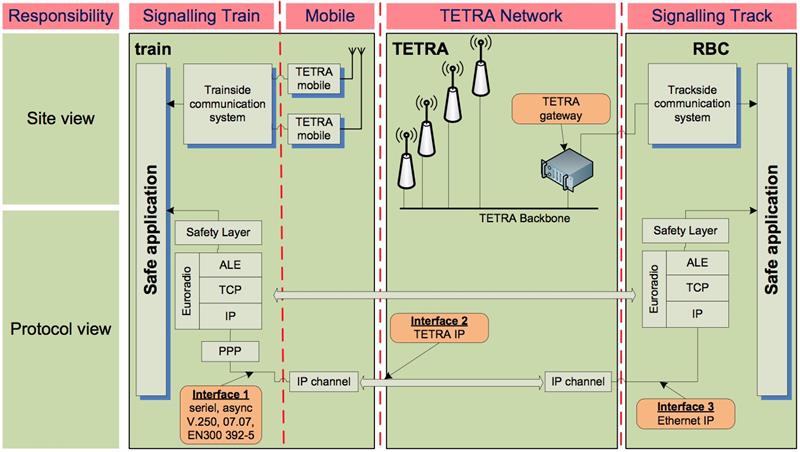The tests mainly focused on bandwidth requirements and the reliability of data delivery. They were performed according to the communication requirement specification for ETCS that describes the worst-case conditions for ETCS communication – UNISIG Subset-093 (PS version). Despite this, during the tests, data transmission quality in both directions was always above the standard’s requirements and TETRA delivered equal or even better results than a GSM-R system.
Siemens opted to use packet data as it provides scalable and sufficient bandwidth for ETCS and it stated that unlike circuit-switching the data are fully interoperable between vendors of a train-borne OBU (onboard unit) and a wayside RBC (radio broadcast centre) along the rail track.

The test architecture
The solution tested has the interoperability that exists between the TETRA vendors that have completed interoperability tests for packet data, as well as the interoperability between OBU and wayside RBC vendors secured by the use of standard ETCS L2, which is also specified for GSM-R packet data.
“Thanks to the easy integration based on a pure IP interface and the longer life time expectation of TETRA systems, this solution can be beneficial or be an alternative, wherever GSM-R is not mandatory due to authority regulations,” explained Sven Hagenbuck, responsible for Siemens Mobility sales in Australia.




